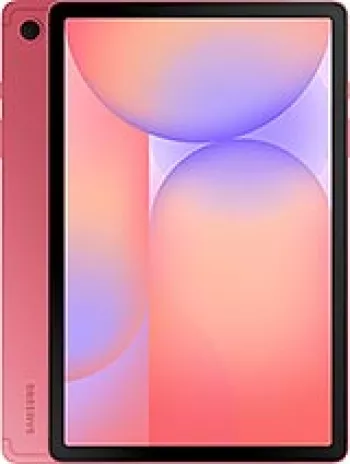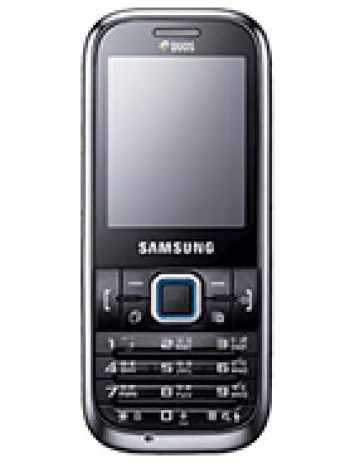
Overview
The Samsung i780 was a distinctive smartphone introduced during a period when mobile technology was rapidly evolving. Announced in September 2007 and released in February 2008, this device brought a unique set of features that catered to business professionals and tech enthusiasts alike. While the Samsung i780 has long been discontinued, it remains a topic of interest for technology historians and collectors who appreciate the evolution of smartphones.
Network and Connectivity
The Samsung i780 was equipped with GSM and HSPA technologies, supporting 2G bands (GSM 900/1800/1900) and a 3G band (HSDPA 2100). It offered data speeds of up to 3.6 Mbps, which was significant for its time. Connectivity was further supported by Wi-Fi 802.11b/g, Bluetooth 2.0 with A2DP for wireless audio streaming, and GPS with A-GPS functionality for location services. The absence of radio and a proprietary USB connection were notable limitations for the device.
Design and Build
The device featured a compact and practical design with a full QWERTY keyboard, making it an ideal choice for users who preferred physical keyboards over touchscreens for typing. Its dimensions were 115.9 x 61.3 x 12.9 mm, and it weighed 120 grams, offering portability and ease of use. The device also supported a Mini-SIM card, which was standard during its time of release.
Display
The Samsung i780 featured a 2.55-inch TFT resistive touchscreen with a resolution of 320 x 320 pixels and a pixel density of approximately 177 ppi. While the display size might seem small by today's standards, it was quite functional for basic smartphone tasks. The resistive touchscreen was less responsive compared to capacitive screens but was sufficient for navigating the Windows Mobile interface.
Platform and Performance
Running on the Microsoft Windows Mobile 6.0 Professional operating system, the i780 was tailored for productivity and enterprise use. It was powered by a 32-bit Marvell PXA310 624 MHz processor, which, albeit modest, managed daily tasks efficiently. The pre-installed software package included Microsoft Office Mobile, improving its appeal to business users who needed to manage documents on the go.
Memory and Storage
The Samsung i780 came with 128MB of RAM and 256MB of ROM, which could be expanded through a dedicated microSD slot. This storage configuration was typical for smartphones at the time. While 128MB of RAM was modest, it managed the device's applications effectively within the constraints of the Windows Mobile operating system.
Camera Features
The device featured a 2 MP main camera, which was fairly standard for its time. It was capable of capturing basic photos and videos. Additionally, the device included a VGA front camera suited for video calls. Although these camera specifications seem minimal compared to contemporary devices, they fulfilled the needs of users at the time.
Sound and Media
Equipped with a loudspeaker, the Samsung i780 supported polyphonic and MP3 ringtones. However, it lacked a 3.5mm jack, which limited its compatibility with various audio accessories. Despite this, the inclusion of Bluetooth with A2DP provided a workaround for wireless audio experiences.
Battery Life
The Samsung i780 was powered by a removable Li-Ion 1480 mAh battery. The battery life was reasonable, offering up to 7 hours of talk time and up to 400 hours on standby. The ability to remove and replace the battery was a practical feature, offering users the option to carry spare batteries for extended usage.
Miscellaneous Features
The device came in a classic black color, with its SAR values indicating compliance with safety standards. The SAR values were 0.48 W/kg for the head and 0.73 W/kg for the body, within acceptable limits for mobile devices. Priced at approximately 150 EUR at launch, it was considered a mid-range device, offering a balance of features and affordability.
Conclusion
The Samsung i780 represented a specific era of mobile innovation, where manufacturers were experimenting with form factors and functionality to cater to professional users. While its capabilities might seem limited by today's standards, it was a comprehensive tool for its target audience during its time. The i780's blend of a physical keyboard, Windows Mobile OS, and robust connectivity options made it a valuable asset for users who needed productivity on the go. Despite its discontinuation, the Samsung i780 remains a notable example of mobile technology's evolution and continues to be appreciated by those interested in the history of smartphones.
Key Features of Samsung i780
- Supports GSM and HSPA technologies
- Compact dimensions: 115.9 x 61.3 x 12.9 mm
- Lightweight at 120 g
- QWERTY keyboard for easy typing
- TFT resistive touchscreen with 65K colors
- 2.55-inch display with a resolution of 320 x 320 pixels
- Runs on Microsoft Windows Mobile 6.0 Professional
- Powered by a 32-bit Marvell PXA310 624 MHz CPU
- Expandable storage via microSD card
- Includes a 2 MP main camera with video capabilities
- VGA camera for video calls
- Wi-Fi 802.11b/g and Bluetooth 2.0 with A2DP support
- GPS and A-GPS for navigation
- Removable Li-Ion 1480 mAh battery with up to 7 hours of talk time
- Comes in black color
Disadvantages of the Samsung i780
- Lacks 4G LTE support, limited to 3G networks only.
- Resistive touchscreen, which is less responsive compared to capacitive screens.
- Low screen-to-body ratio (~29.5%), resulting in a smaller display area.
- Outdated operating system (Microsoft Windows Mobile 6.0 Professional).
- Limited internal memory (128MB RAM, 256MB ROM).
- No 3.5mm headphone jack, which limits headphone options.
- Proprietary USB connection instead of the more standard microUSB or USB-C.
- No built-in FM radio functionality.
- Basic camera capabilities with a 2 MP main camera and VGA selfie camera.










View Also
More Phones
All Rights Reserved +14266 Phones © Mobilawy 2025

























